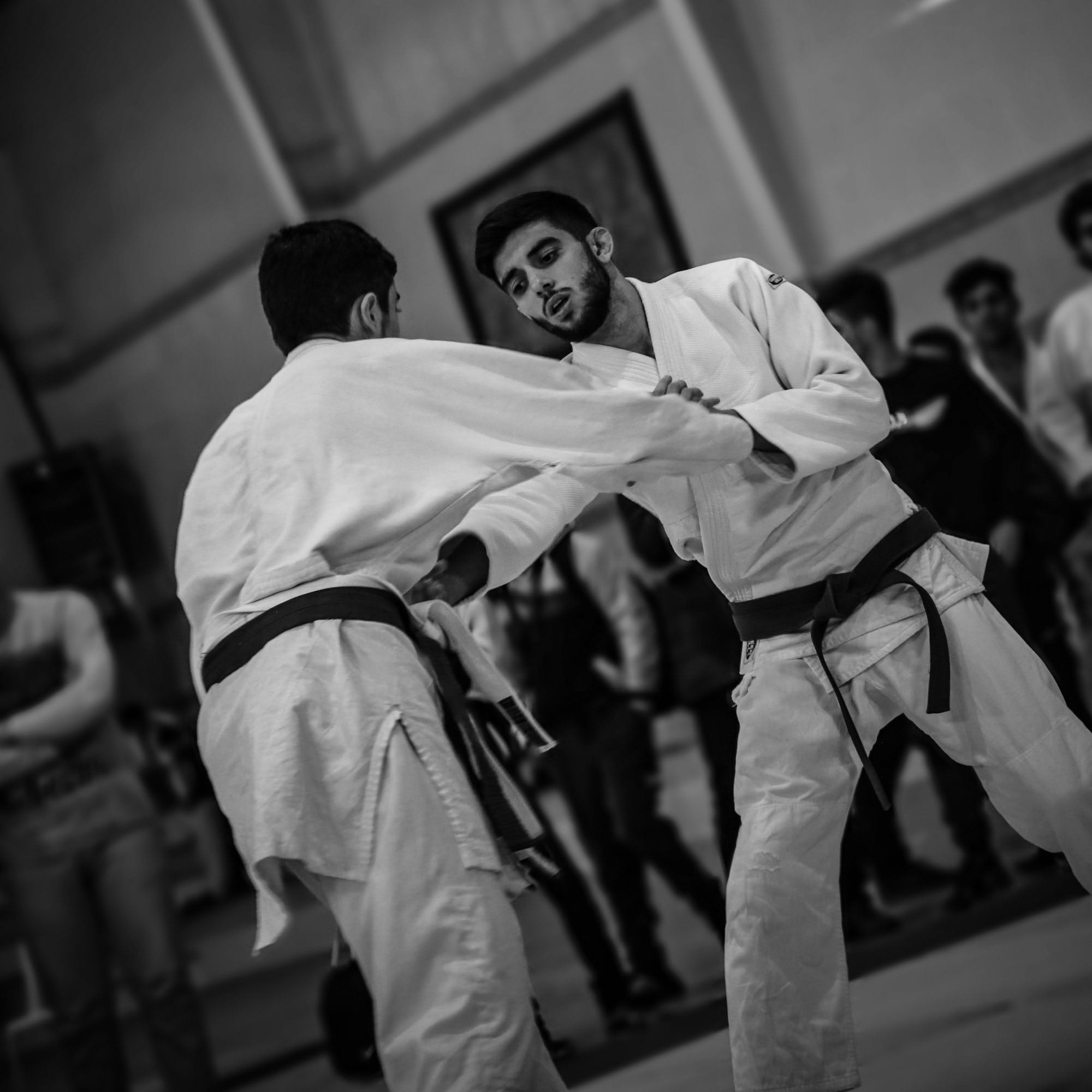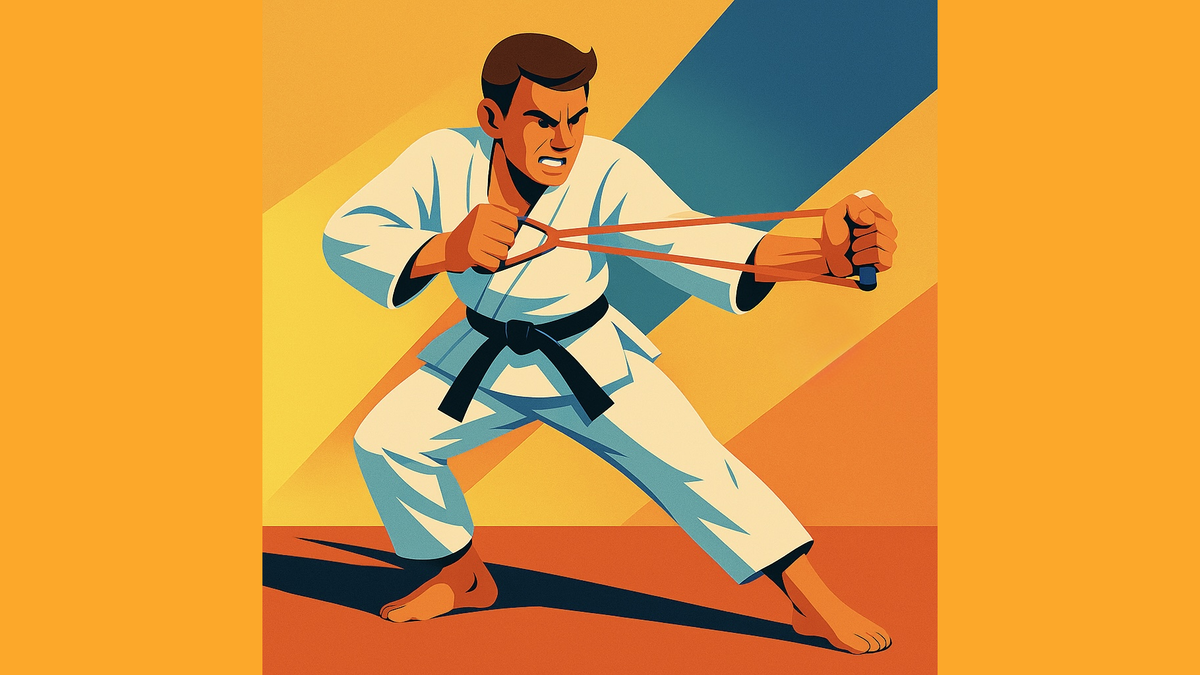What If the Match Was Won Before the Throw?
Seoul, 1988. The clock reads 4:59. Aurelio Miguel of Brazil hasn’t thrown a single technique yet. He hasn’t needed to. His opponent is already paralyzed—pinned by the invisible force of grip dominance. One hand on the collar, one on the sleeve. The throw is coming. Everyone knows it. The opponent can’t stop it.
Every judoka has felt it: that quiet panic when you can’t get your grip, when your opponent seems to read your hands like a book. You’re locked out before you even step in. Welcome to the real fight in Judo—the grip game, or Kumi Kata.
It’s not just a handshake before the storm. It is the storm. Elite coaches and athletes argue it’s the single most decisive phase in modern Judo. And the data backs them up.
In this NotebookLM podcast, we discuss Kumi Kata, or grip fighting, in Judo, highlighting its fundamental importance in securing an advantage and executing throws. We explore various gripping strategies, from standard sleeve-and-lapel holds to more aggressive re-gripping techniques, referencing expert practitioners like Jimmy Pedro and Toshihiko Koga to illustrate diverse approaches
⸻
Not Just a Precursor—It’s the First Victory
Forget the notion that gripping is just about starting the match. According to USA Judoka Travis Stevens, every gripping exchange has a winner and a loser. This means the first battle isn't a throw—it's contact. No balance broken, no technique launched, until the grip is won.
And there’s order in this chaos. Judo’s rhythm—Kumi Kata, Kuzushi (balance breaking), then Waza (technique)—is foundational. Skip the grip, and you’re skipping the foundation of effective attack.
For a foundational perspective, this post from JudoAdvisor.com does an excellent job of explaining how grip fighting initiates and defines the flow of a match, especially for novice and intermediate judoka.

⸻
Build Your Grip Like a Blueprint, Not a Reaction
One of the simplest yet most ignored strategies? Have a plan. As Liam Wicks writes, gripping isn't improvisation—it’s engineering. You need a target grip that aligns with your go-to throws. Random grips yield random results.
- Jimmy Pedro, an "outside" fighter, used a wide, over-the-shoulder grip tailored for control and tempo.
- Toshihiko Koga, an "inside" fighter, reached under the armpit for a tight, fast rotation into Seoi Nage.
These aren’t preferences—they’re grip-throw ecosystems. Your grip should fuel your throw, not just look cool.
⸻
Re-Gripping: The Loop That Scores
When the IJF rewrote the rules in 2013, it accidentally supercharged a new tactic: re-gripping. Think of it as tactical looping—grabbing, releasing, re-establishing contact to manipulate tempo and angles.
A 2019 study by Ito et al. found re-gripping increased scoring success when targeting unconventional holds—like the back or competition number zone. It’s less about tradition, more about tactical geometry.
Further reading: Ito, K., Hirose, N., Maekawa, N. (2019). Characteristics of Re-gripping Techniques Preceding Scored Throws in International-level Judo Competition. This is published in the Central European Journal of Sport Sciences and Medicine, Volume 1 (25), pages 43–50, with the DOI: 10.18276/cej.2019.1-05
But it’s a scalpel, not a sledgehammer: on traditional grips (collar and sleeve), re-gripping actually reduced effectiveness. Lesson? Be direct when going classic. Be dynamic when going rogue.

⸻
Grip Breaks Aren’t Just Defensive—They’re Launchpads
Breaking a grip isn’t enough—you have to attack off the break. Stevens illustrates a bow-and-arrow-style motion: push the lapel, pull the sleeve, disrupt their grip while anchoring your own stance. This isn’t just escape—it’s a slingshot.
The golden rule? Your grip break should never break your own posture. Use the natural limit of your shoulder mobility as a fail-safe. Control your own frame while dismantling theirs.

⸻
Sword Hands, Throw Bodies
Miyamoto Musashi wasn’t a judoka, but his legacy still shapes the mat. His sword grip—light with the thumb and forefinger, firm with the last two fingers—is biomechanical brilliance. It links hand to lat, creating a tensioned line nearly impossible to peel off.
Think katana. Think lapel. Think weaponized structure.
To see the theory in action, check out this instructional video on Basic Kumi Kata Drills. It offers step-by-step sequences that judoka of all levels can incorporate to refine their gripping reflexes and reactions.
Takeaways for the Tatami
- Plan your grip like a throw—don’t improvise. Your grip should match your preferred throws and strategic style.
- Gripping is combat, not ceremony. It decides initiative and often, the match.
- Re-gripping is a scoring asset—when aimed smartly. Use it for unconventional targets, not for classic collar-sleeve plays.
- Grip breaks must flow into throws. Every break is an opportunity, not a pause.
- The three-finger grip is biomechanical brilliance. Adopt it for control, adaptability, and historical badassery.
- Posture is non-negotiable. No grip strategy should cost you your balance or position.
Final Thought
The crowd sees the throw. The judoka feels the grip. So next time you step on the mat, ask yourself:
Are you gripping to dominate, or just holding on for dear life?
Quiz: What did the 2019 study by Ito et al. reveal about re-gripping strategies in modern judo?
A) Re-gripping increased scoring on traditional collar-and-sleeve grips
B) Re-gripping decreased effectiveness on unorthodox targets
C) Re-gripping improved success when targeting areas like the back or competition number
D) Re-gripping had no significant impact on scoring
Answer
Correct Answer: C) Re-gripping improved success when targeting areas like the back or competition number
Explanation: The article cites the study showing re-gripping led to significantly higher scores when judoka targeted unconventional grips beyond the classic collar-and-sleeve
(1) Ito, K., Hirose, N., Maekawa, N. (2019). Characteristics of Re-gripping Techniques Preceding Scored Throws in International-level Judo Competition. This is published in the Central European Journal of Sport Sciences and Medicine, Volume 1 (25), pages 43–50, with the DOI: 10.18276/cej.2019.1-05
(2) Wicks, L. (2009). An introduction to Kumi Kata (grip fighting) for novice Judo athletes. https://judoadvisor.com/2009/02/an-introduction-to-kumi-kata-grip-fighting-for-novice-judo-athletes/





Member discussion: